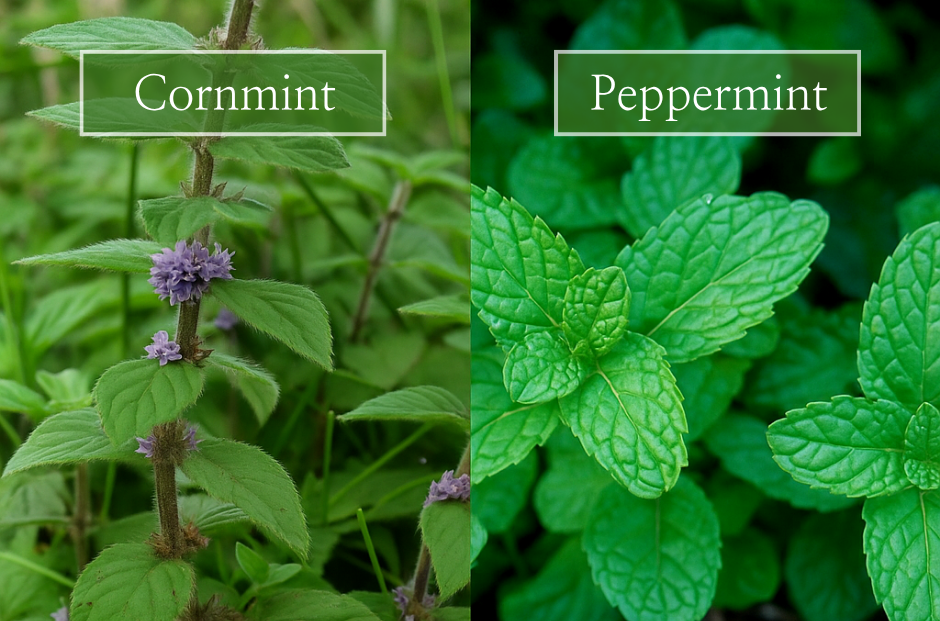
When it comes to natural extracts and essential oils, cornmint and peppermint are frequently confused. They both belong to the mint plant family and carry a similar fresh scent, but they vary in composition, applications, and uses. For pharmaceuticals, cosmetics, and aromatherapy industries, knowing these differences is significant. Let’s discuss the primary differences between these two oils, and why it’s important to your formulations.
Peppermint (Mentha piperita) is a natural cross between spearmint and watermint. Its key components include menthol, menthone, and menthyl acetate, providing a smooth and balanced minty flavor.
Peppermint oil is used in cooking, cosmetics, and aromatherapy because of its refined scent and flavor.
Cornmint (Mentha arvensis), also known as Japanese mint, is one of the richest natural sources of menthol. It is steam-distilled oil from the plant’s flowering tops, then crystallized for menthol crystals with cornmint oil left behind.
Due to its cost-effectiveness and high menthol production, cornmint finds extensive applications in drugs, cosmetics, and therapeutic balms.
The Major Differences
Despite both being members of the mint family, their chemical makeup and applications are quite different:
To manufacturers and formulators, whether to use one of them can make a difference in product quality, price, and acceptability to consumers.
Although often used interchangeably, both of these oils serves distinct purposes in industries ranging from healthcare to personal care. At Jindal Drugs, we specialize in producing high-quality mint-derived essential oils that meet global standards, ensuring purity, consistency, and reliability for our clients.
No matter if you require the cooling power of cornmint or the handy sweetness of peppermint, selecting the correct option can raise your products and your customers’ satisfaction levels.